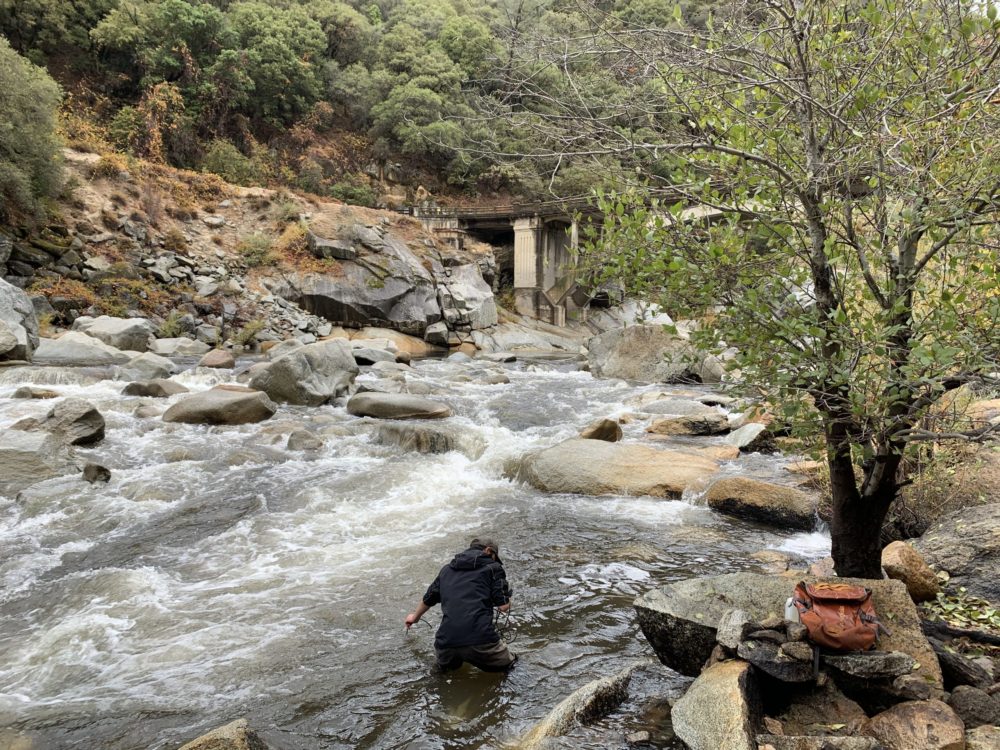Post-Jones Fire: First Flush Evaluation
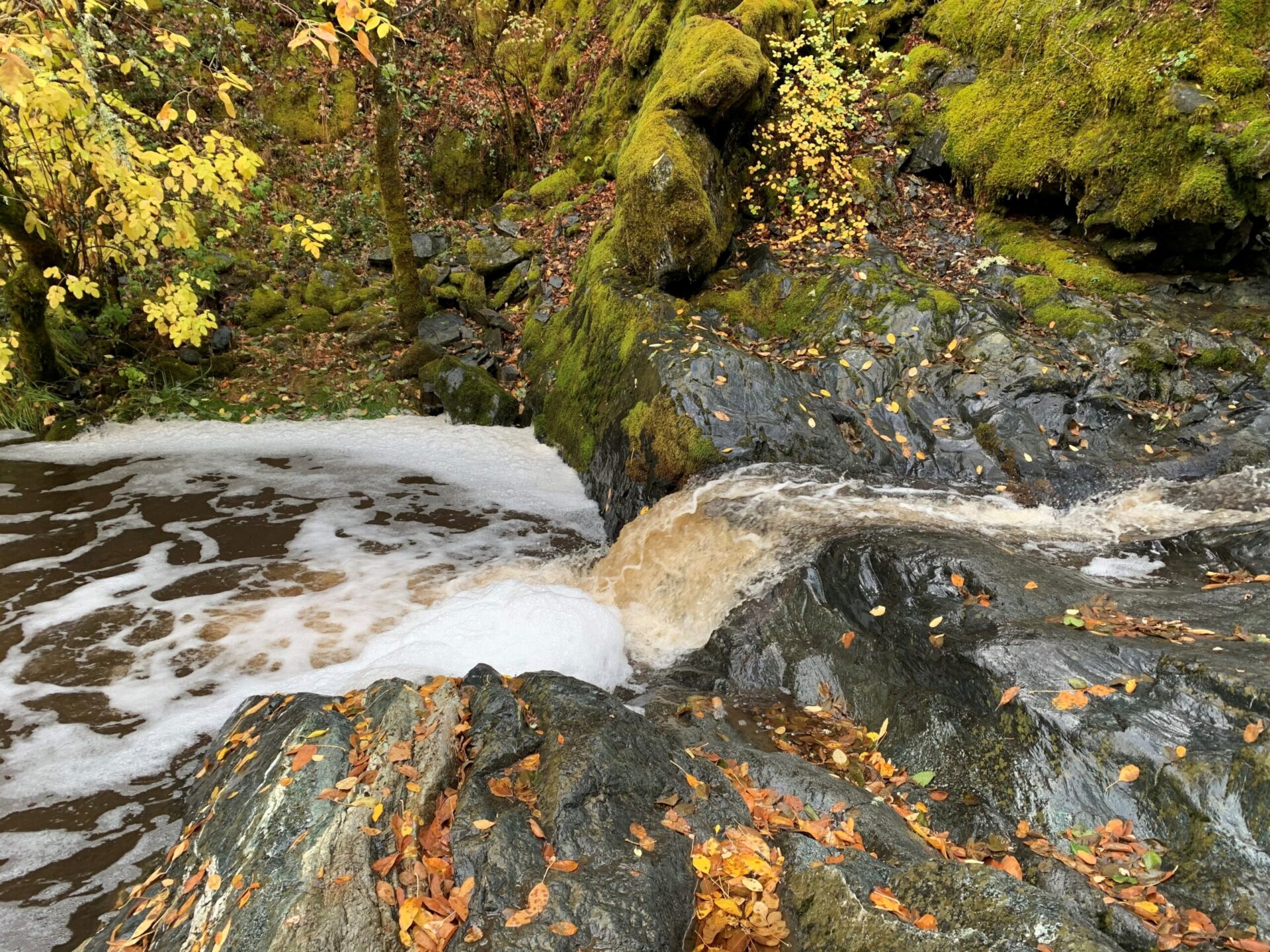
In August 2020, the Jones Fire ignited in the South Yuba River canyon and burned 705 acres along Rush Creek, a tributary to our Wild and Scenic South Yuba River. While fire has always been a vital natural process in California, the wildfires of today burn far hotter and across larger tracts of land than our ecosystems can endure.
Severely burned ecosystems are particularly vulnerable to tremendous nutrient and soil loss when weather events occur. This vulnerability is especially prominent during the first significant rain events of the year, or what we like to call the “first flush.” Every fall, the first rains of the season wash dust, vegetation, and other debris accumulated over the dry, summer months into our rivers.
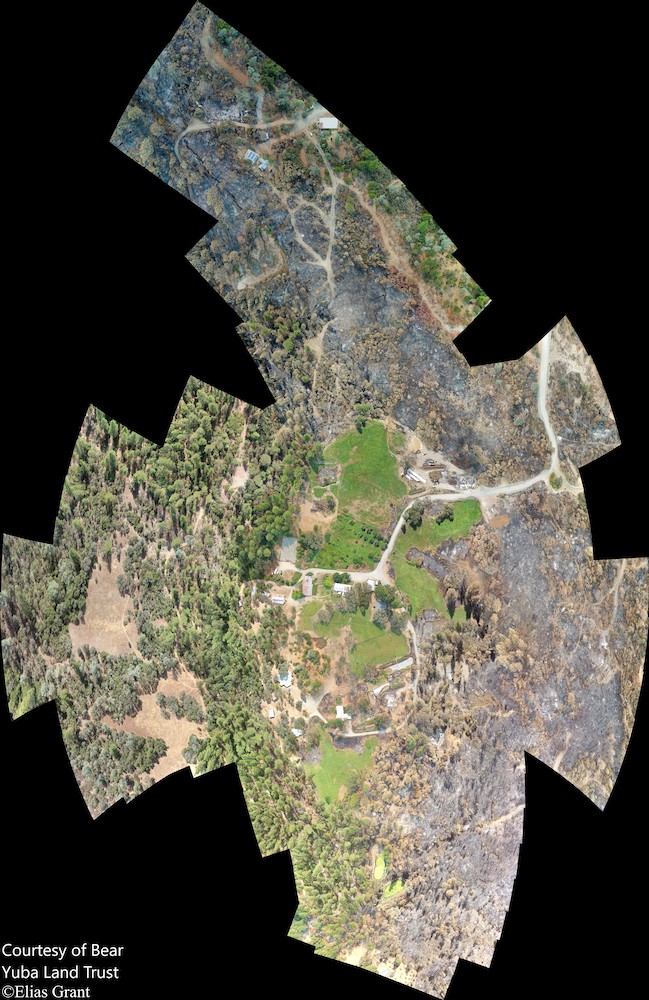

Rush Creek, where the Jones Fire occurred, will see more turbid water because the vegetation that helped hold soil in place was burned, and in some places removed to help fight the fire. On the steep hillslopes, the decrease in vegetation combined with rain can potentially trigger debris flows and landslides. If you want to learn more about debris flows, see our previous article, Fire and Water on the Yuba, which explains this process in greater detail.
SYRCL anticipated that the fire retardant used on the Jones Fire could potentially make its way into Rush Creek and the South Yuba, so our team of scientists conducted first flush storm sampling during light and moderate rain events in November to examine potential impacts. With the support of the Nevada County Environmental Health Department and State Parks, SYRCL collected water quality data during two first flush events.
Investigative sampling of potential impacts of the Jones Fire on Rush Creek and the South Yuba began in September to obtain a pre-first flush baseline for water quality. In November, the first rainfall events of the year took place and SYRCL staff hiked down to sites located along Rush Creek, Jones Bar, and Highway 49 Crossing to take water quality samples. We examined four different sites for the second rain event.
We sampled for basic water quality parameters (turbidity, pH, dissolved oxygen, conductivity, water temperature) in addition to toxic metals, bacteria, and the phosphorus and ammonia found in fire retardant by collecting water samples at Jones Bar. Basic water quality parameters taken by SYRCL staff revealed no significant changes in turbidity, pH, dissolved oxygen, conductivity, or water temperature. Turbidity measurements were elevated in Rush Creek but were not abnormal compared to previous years.
Toxic metal sampling involved the laboratory analysis of water samples for the following suite of metals: Boron, Iron, Aluminum, Antimony, Arsenic, Barium, Beryllium, Cadmium, Chromium, Copper, Lead, Manganese, Nickel, Selenium, Silver, Thallium, Vanadium, Zinc, and Mercury. Of these, Boron, Beryllium, Cadmium, Silver, Thallium, and Zinc were all found to be in concentrations less than could be detected analytically at all sites for each sampling event.
Laboratory analysis of storm sampling conducted on November 18, 2020, revealed Aluminum concentrations of 1202 µg/L in Lower Rush Creek, above the threshold of 750 µg/L set by the US Environmental Protection Agency (EPA).
Upstream of the junction of Rush Creek and the South Yuba, Aluminum concentration was 301.4 µg/L. After Rush Creek joined the South Yuba, the Aluminum concentration of these combined waters was 351.3 µg/L but increased once more a bit further downstream to 436.7 µg/L.
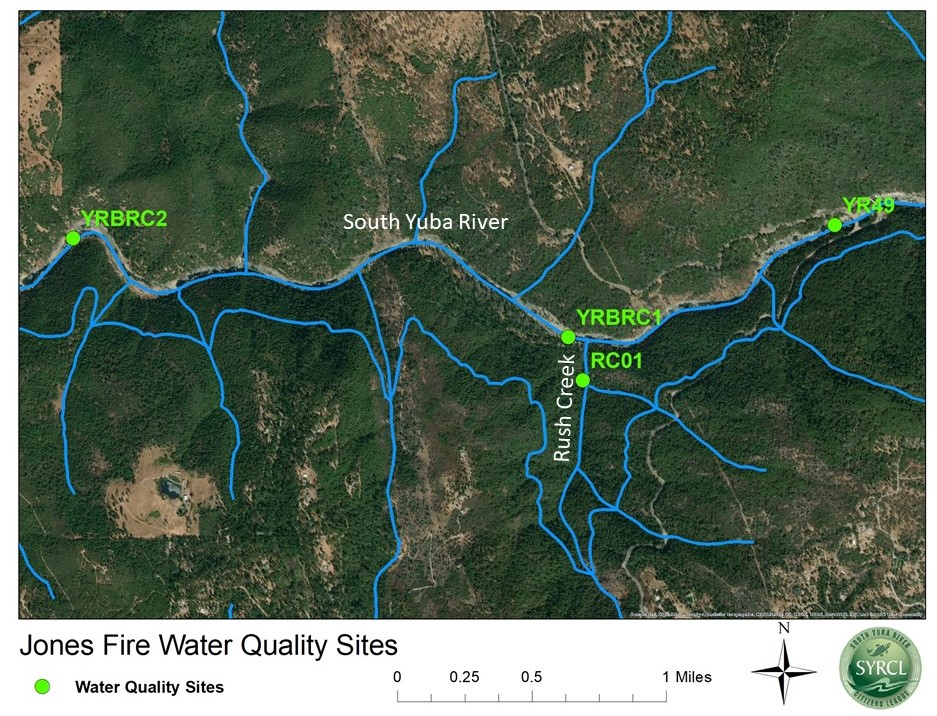
Click on map to view in a larger format.
The remaining metals had at least one concentration high enough to be detected by laboratory analysis but remained well beneath the thresholds established by the US EPA. Overall, laboratory analysis suggests that toxic metals are likely not to be of concern as an impact of the Jones Fire.
Bacterial analysis of the water samples examined E. coli and Total Coliform. The US EPA recommends a statistical threshold value of 320 MPN/100mL for E. coli, which was exceeded at all three sample sites during the November 18, 2020 first flush rain event. The Rush Creek (red bar) sample in particular contained roughly 8x the EPA recommended threshold for E. coli, which sat in sharp contrast to almost zero found in pre-storm conditions in September. Total coliform can indicate an environmental problem and includes bacteria like E. coli as well as non-fecal coliform found in soils. The first flush rain undoubtedly washed E. coli and soil dwelling coliform alike into Rush Creek and the South Yuba elevating bacteria levels beyond pre-storm baseline conditions.
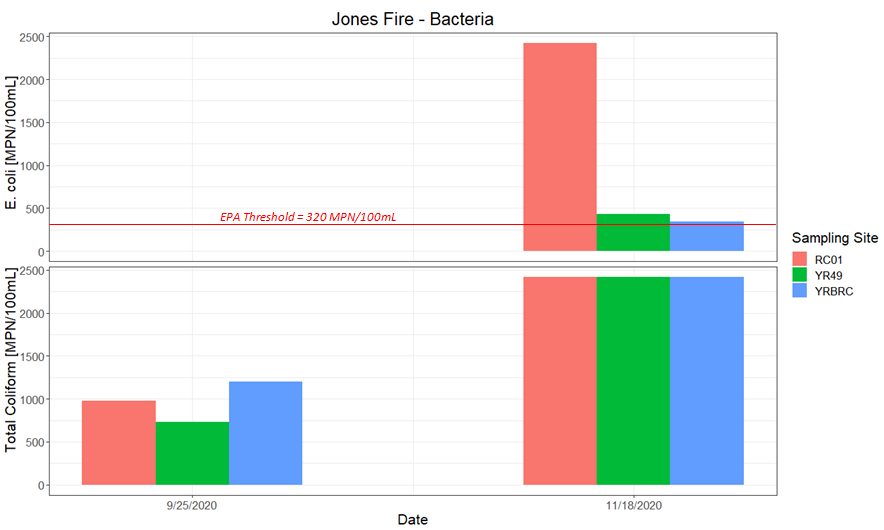
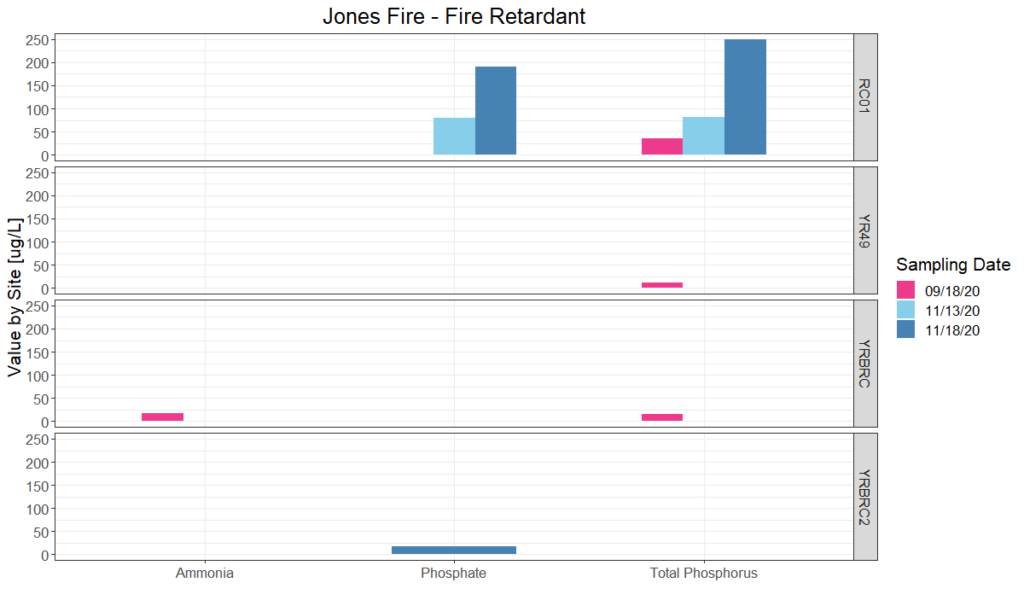
Click on graphs above to view in a larger format.
Laboratory analysis of water samples for the constituents ammonia and total phosphorus, which are found in fire retardants, revealed that the sampled first flush events did not cause a significant influx of these compounds into Rush Creek and the South Yuba. US EPA’s Numeric Action Levels (NALs) for ammonia and total phosphorus are 2,140 µg/L and 2,000 µg/L, respectively. The concentrations found for all three sampling dates indicate ammonia, nitrate, and total phosphorus levels are acceptable.
While our sampling results suggests that there is unlikely to be a significant impact to Rush Creek or the South Yuba due to fire retardant used in combating the Jones Fire, it should be noted that the timing with which pollutants are transported from the landscape into a creek or river is heavily dependent on the hydrology and geology of the landscape, as well as the weather event occurring. As such, water quality sampling can return variable results. SYRCL staff have applied for a California State Parks Foundation grant in order to continue monitoring any potential effects the Jones Fire may have on Rush Creek and the South Yuba River.
In summary, fire retardant impacts appear to be not significant at this time; however, Aluminum, E. coli and Total Coliform were found to be elevated during first flush events. E. coli originates from the feces of mammal species and as such, septic systems and pets can be unintentional sources of E. coli. Please be sure to pick up after your pets or if you live near the river to have your septic system inspected regularly to address any unknown leaks!
Did you enjoy this post?
Get new SYRCL articles delivered to your inbox by subscribing to our ENews.

